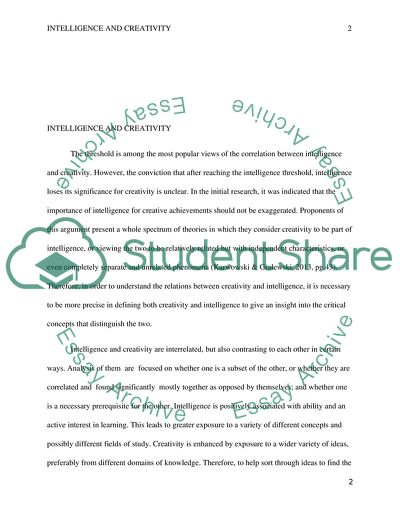Cite this document
(The Mental Processes Behind Intelligence and Creativity Essay Example | Topics and Well Written Essays - 1500 words, n.d.)
The Mental Processes Behind Intelligence and Creativity Essay Example | Topics and Well Written Essays - 1500 words. https://studentshare.org/psychology/1872265-what-are-the-mental-processes-behind-intelligence-and-creativity-and-are-they-the-same-thing
The Mental Processes Behind Intelligence and Creativity Essay Example | Topics and Well Written Essays - 1500 words. https://studentshare.org/psychology/1872265-what-are-the-mental-processes-behind-intelligence-and-creativity-and-are-they-the-same-thing
(The Mental Processes Behind Intelligence and Creativity Essay Example | Topics and Well Written Essays - 1500 Words)
The Mental Processes Behind Intelligence and Creativity Essay Example | Topics and Well Written Essays - 1500 Words. https://studentshare.org/psychology/1872265-what-are-the-mental-processes-behind-intelligence-and-creativity-and-are-they-the-same-thing.
The Mental Processes Behind Intelligence and Creativity Essay Example | Topics and Well Written Essays - 1500 Words. https://studentshare.org/psychology/1872265-what-are-the-mental-processes-behind-intelligence-and-creativity-and-are-they-the-same-thing.
“The Mental Processes Behind Intelligence and Creativity Essay Example | Topics and Well Written Essays - 1500 Words”. https://studentshare.org/psychology/1872265-what-are-the-mental-processes-behind-intelligence-and-creativity-and-are-they-the-same-thing.


